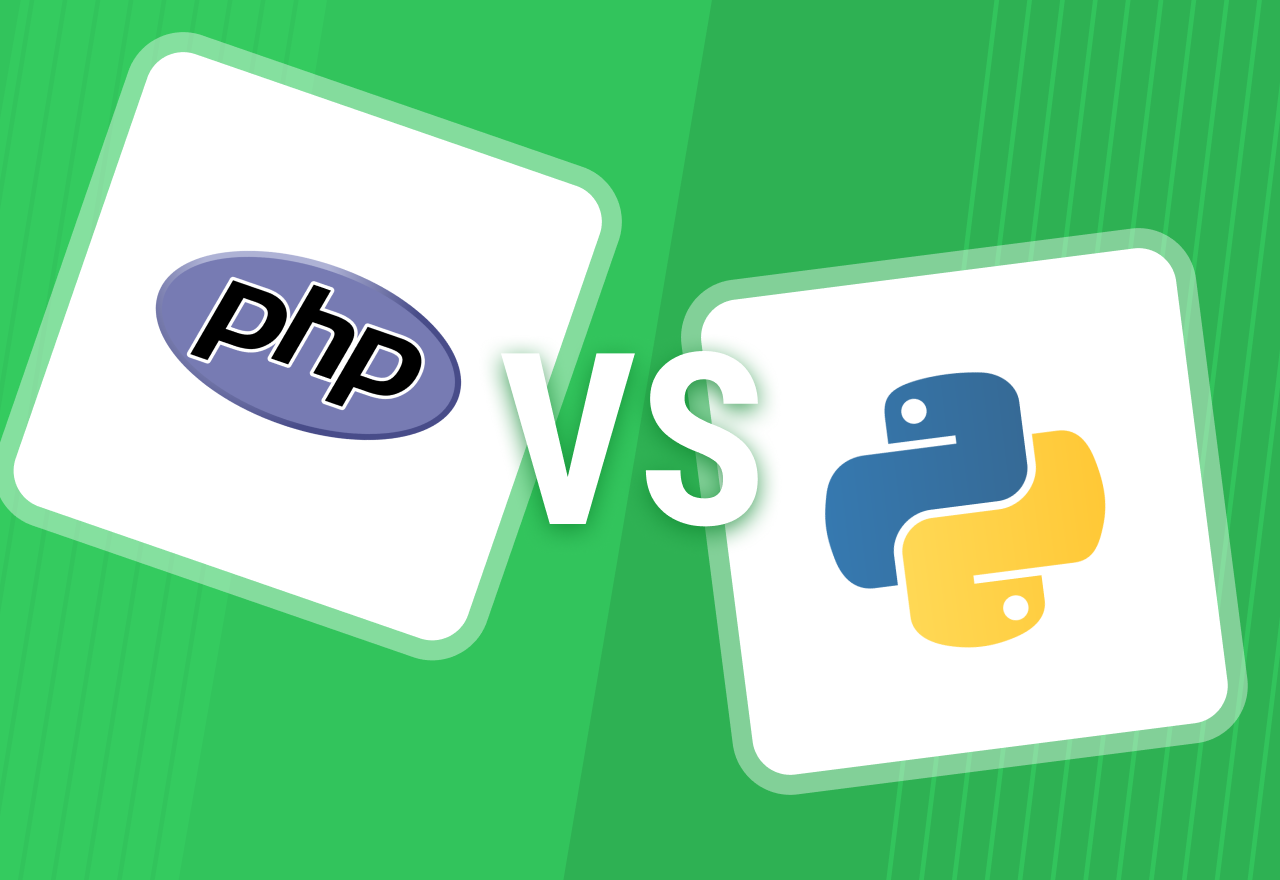5 Inspiring Web Development Trends of 2025
Table of contents
It’s nearly 40 years since the advent of the Internet — years of developments, changes, and shifts forming the web space we know today. But it would be fair to say that one of the biggest changing waves has occurred in the post-pandemic years — the one that can be characterized by a sharp focus on enhanced user experience and rapid growth in sophisticated technology.
With the constantly growing number of web users (5 billion worldwide) and websites (1.98 billion), the development and advances of web technologies are inevitable. Such a dynamic web infrastructure creates many challenges for businesses with a presence on the web. But together with challenges, it also creates new opportunities: those allowing to improve product or service offerings, enhance user experience with the brand, and stand out from the competition.
Being constantly on the hunt for new inspiring technologies and web practices, we at Emerline consider ourselves pioneers in tech innovation, and enthusiastically introduce you to the 5 most inspiring web development trends we see in 2025. The future is already here; below, you’ll see proof of that!
The Most Exciting Web Development Trends of 2025 Picked by Emerline
If you browse the Internet searching for “web development trends”, you’ll find plenty of reports and articles, each highlighting from 3 to 20 different technologies used this year. The point is that there’s no right answer to the question of which web development trends are of the highest importance this year, so below, you’ll find 5 we picked as the most exciting ones.
Applied AI
Applied AI has already paved its way to the business sphere as a powerful tool for automation, generation of insights, and aid provider in making smart data-based decisions. But is this trend just a buzzword, or do business owners have to be serious about it?
As for the McKinsey report, 67% percent of respondents surveyed in 2021 stated that the adoption of AI resulted in increased revenue rates, and 79% enjoyed a cost decrease. So there's no doubt that with such a beneficial potential, AI technologies will continue to conquer new business niches at a remarkable pace.
Looking at the current state of AI, we can see that technology-centric industries now lead the adoption. Among them are automotive, pharmaceuticals, aerospace, agriculture, healthcare, and education. There, AI is widely used for product and service development, service operations, and marketing and sales tasks. And here are some examples.
- In agriculture, AI optimizes processes through capabilities such as productivity forecasting and driverless tractors.
- In healthcare, it enhances services through automated pathology recognition and diagnostic decision support.
- In education, it opens up space for personalized learning based on student progress.
As more businesses are working with AI, the technology becomes more mature and trusted. And that's all good news, meaning that AI has already stepped out of the research phase — it's becoming applied, taking center stage in world-leading tech companies like Microsoft, Amazon, and beyond.
Web3
The term Web3 covers several trends linked to the phenomenon known as the "decentralized internet." The idea behind it is the creation of an internet that isn't controlled by giant corporations like Google and Facebook: those now setting most of the rules on what people can and can't do online. And all the related trends, whether blockchain, cryptocurrency, nonfungible tokens (NFTs), or decentralized autonomous organizations (DAOs), contribute to the idea of digital democracy.
But even though digital democracy may sound good, there are a lot of critics around Web 3. Some state that Web 3 will do no more than just transfer power from one group of technocrats to another. Others mention that decentralization will lead to a highly increased consumption of electricity. And for sure, these challenges need to be addressed before the concept achieves societal buy-in.
Anyway, we can clearly see that technologies supporting Web 3 are experiencing good times.
- According to Statista, in 2021, the blockchain and cryptocurrency sectors attracted over $32 billion globally.
- According to the World Economic Forum White Paper published in June 2022, the analytics service DeepDAO states that in 2021, the total value of DAO treasuries surged fortyfold, from $400 million to $16 billion, and the number of DAO participants increased by 130 times from 13,000 to 1.6 million.
- According to a new report from NFT data company Nonfungible.com, sales of nonfungible tokens jumped to more than $17 billion in 2021.
And when it comes to the latter, just recently, we at Emerline delivered a sports NFT marketplace platform where users could buy NFT packages and then resell NFT tokens on a secondary marketplace within the platform.
Industrializing ML
The latest statistics show that 83% of companies claim that AI and ML technologies are top priorities in their business plans, and 48% of businesses use some form of AI to utilize big data effectively. And while this data looks exciting, there is a common theme, when a company adopts AI tools and develops the first data model they still can't take advantage of it because there's still a lot more required to it to develop an entire machine learning operation cycle. And here's where we come to the trend itself - industrialized ML.
So what does industrializing ML mean, and why is it a trend? There are ML workflows that make AI and ML technologies applicable to real-world business cases, and industrializing ML solutions are those offering software and hardware technologies to scale ML workflows and ease the development and deployment of ML for organizations. If you need more proof of the legitimacy of a trend or reasons to consider industrialized ML solution development, here are some more benefits for you:
- Acceleration of AI adoption
- Improvement of productivity for tech specialists
- Ground for efficient collaboration between technical and nontechnical experts
- Improvement in scalability and interoperability
- Faster development and deployment
- Standardized processes
- Improved technical performance
- Reduced costs
- Higher privacy and security
Trust Architectures and Digital Identity
Increasing cyberattacks and data breaches continually serve as a driver for companies to look for and adopt new technologies capable of addressing such issues. And good examples are digital trust technologies - one more trend to discuss. They allow organizations to gain a competitive advantage by building, scaling, and maintaining the trust of stakeholders in using their products and services.
What are digital trust technologies? Here are some examples:
- Zero-trust architecture (ZTA)
It's an IT security system that works under the principle of not trusting any entities, whether inside or outside the organization's computer network.
- Digital identity
These mechanisms provide complete information to identify and recognize individual entities in the digital space.
- Privacy engineering
These techniques enable oversight, implementation, operation, and maintenance of privacy.
- Explainable artificial intelligence (XAI)
Techniques are used to build trust in AI models and understand them before real-world deployment.
Each of these technologies can be applied in different industrial sectors, opening up space for advanced business opportunities.
- In IT and electronics, they can improve software solutions and AI model development and deployment.
- In finance, digital identity can be applied to decrease losses and mitigate risk.
- In healthcare, it can balance the protection of sensitive healthcare data with the increase of new uses for these data.
- In retail, these technologies ensure secure access to sensitive customer data and contribute to a more substantial brand reputation.
There are numerous other use cases of digital trust technologies, each showcasing incredible results, not just in terms of increased security but the enhancement of the overall productivity and strengthening of a brand.
Quantum Technologies
These futuristic technologies aspire to change our computational, networking, and sensory infrastructure in the coming decades, unlocking opportunities that were previously unimaginable. There are three main directions:
- Quantum computing
- Quantum communication
- Quantum sensing
And while this trend is new and it’s hard to say how it will develop, some predictions already make it worthy of your attention.

Before quantum technologies will become available in their ‘perfect’ form, we can expect the emergence of hybrid solutions. And when it comes to the current situation, researchers are now mainly focused on the creation of stand-alone, fully capable quantum processors with a high count of quality qubits to achieve “quantum advantage” over classical computers and, secondly, on finding ways to overcome engineering challenges and build a technology stack of hardware and software to make state-of-the-art quantum computers market ready.
And their efforts are worth it, as, according to McKinsey, quantum technologies will allow:
- Solving business-relevant optimization problems in certain niches would be 10% faster than previously possible.
- Simulating the properties of small molecules with 5% higher accuracy can enable the creation of new products, such as simulating surfactants to develop a better carpet cleaner.
- Better data sampling to train AI may take longer, but the trained algorithm gives 20% better answers.
At Emerline, we always keep a finger on the pulse of the latest trends. Being always open to challenges and passionate about new technologies that make the lives of our clients and their customers easier, we will be happy to become a vital link on the way to your boldest web solution idea. So whether you’re looking for a technology partner who’ll take care of the entire project, from idea validation to the launch and support of the solution, or you need to augment your team with experienced and enthusiastic specialists, contact us!
Let’s pave the way to the future together.
Updated on Feb 26, 2025





